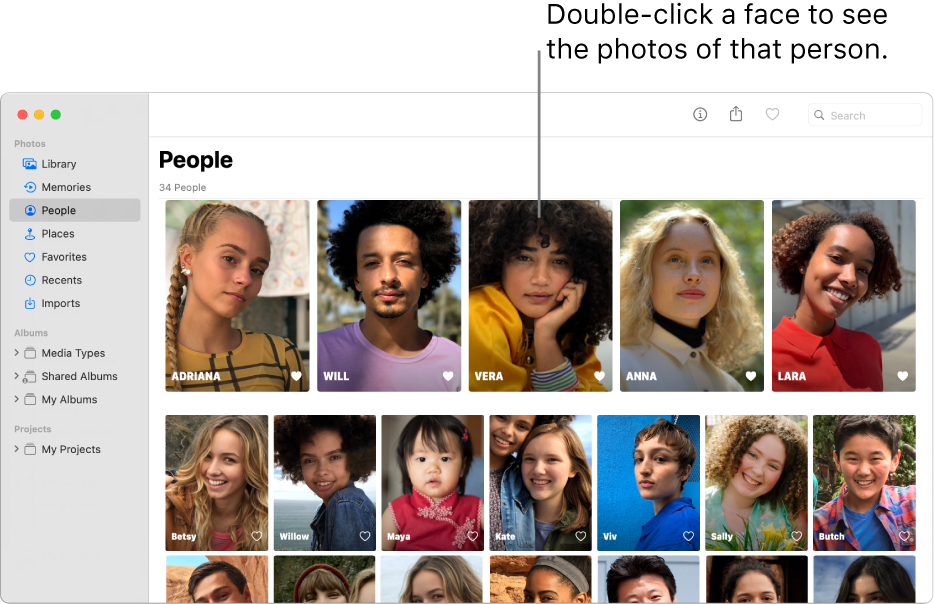

- #Get mac photos to add a new person and search for their face software
- #Get mac photos to add a new person and search for their face code
The technology is used for a variety of purposes. It is estimated that over half of the world's population is touched by facial recognition technology regularly.

Intuitively, this makes sense, since we typically recognize ourselves and others by looking at faces, rather than thumbprints and irises. Of all the biometric measurements, facial recognition is considered the most natural. If your faceprint matches an image in a facial recognition database, then a determination is made. On Facebook, any photo tagged with a person’s name becomes a part of Facebook's database, which may also be used for facial recognition. For example, the FBI has access to up to 650 million photos, drawn from various state databases. Your faceprint is then compared against a database of other known faces. In the same way that thumbprints are unique, each person has their own faceprint.
#Get mac photos to add a new person and search for their face code
The numerical code is called a faceprint. Your face's analysis is essentially turned into a mathematical formula. The face capture process transforms analog information (a face) into a set of digital information (data) based on the person's facial features. The aim is to identify the facial landmarks that are key to distinguishing your face. Key factors include the distance between your eyes, the depth of your eye sockets, the distance from forehead to chin, the shape of your cheekbones, and the contour of the lips, ears, and chin.
#Get mac photos to add a new person and search for their face software
The software reads the geometry of your face. Most facial recognition technology relies on 2D rather than 3D images because it can more conveniently match a 2D image with public photos or those in a database. Next, an image of the face is captured and analyzed. The image may show the person looking straight ahead or in profile.

The camera detects and locates the image of a face, either alone or in a crowd. Facial technology systems can vary, but in general, they tend to operate as follows: Step 1: Face detection

The watch lists can contain pictures of anyone, including people who are not suspected of any wrongdoing, and the images can come from anywhere - even from our social media accounts. Typically, facial recognition does not rely on a massive database of photos to determine an individual’s identity - it simply identifies and recognizes one person as the sole owner of the device, while limiting access to others.īeyond unlocking phones, facial recognition works by matching the faces of people walking past special cameras, to images of people on a watch list. Many people are familiar with face recognition technology through the FaceID used to unlock iPhones (however, this is only one application of face recognition). The technology is mostly used for security and law enforcement, though there is increasing interest in other areas of use. Other forms of biometric software include voice recognition, fingerprint recognition, and eye retina or iris recognition. Facial recognition systems can be used to identify people in photos, videos, or in real-time.įacial recognition is a category of biometric security. Facial recognition is a way of identifying or confirming an individual’s identity using their face.


 0 kommentar(er)
0 kommentar(er)
